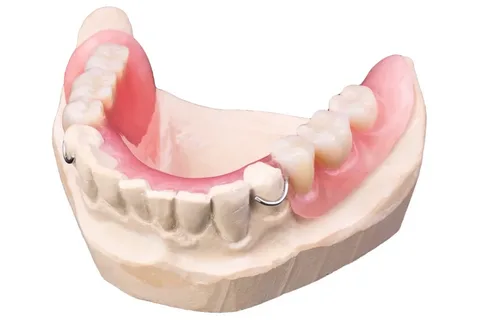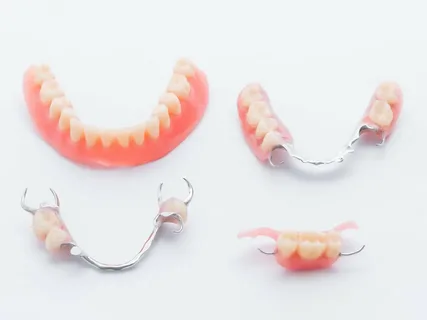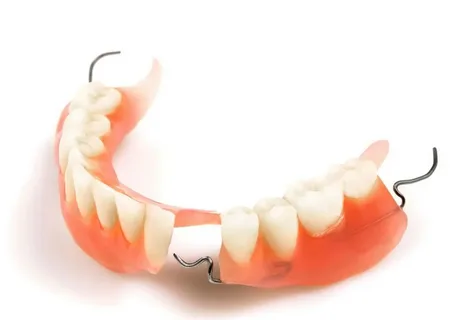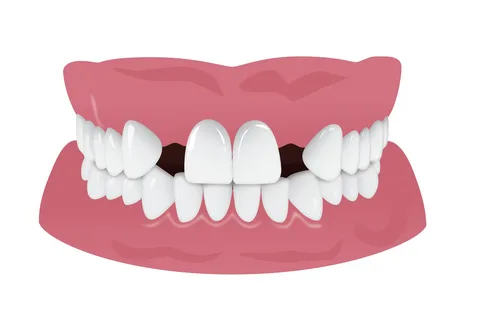Planning prosthetics based on ChSPP
Machine translation
Original article is written in RU language (link to read it).
Before starting the manufacture of any orthopedic structure, it is necessary to conduct an examination of the patient, establish the causes, pathogenesis, and features of the clinical picture of the disease in a particular patient. This approach will ensure the accuracy of the diagnosis and will allow you to correctly draw up a set of therapeutic measures to correct the integrity and normalize the functioning of the dentofacial apparatus.
Only after assessing the results of the examination, relying on objective indicators of the condition of soft tissues and teeth, taking into account the location of the defect in the dental arch, can one begin to plan prosthetics based on a partial removable denture.
About the benefits of removable prosthetics at the webinar Introduction to removable prosthetics .
Goals of prosthetics
Determined after analyzing the examination results, the following goals of prosthetics are distinguished:
therapeutic, it is aimed at normalizing the performance of impaired functions, as well as restoring aesthetics;
preventive is focused on maintaining the remaining teeth, preventing their subsequent destruction, which is possible due to the elimination of overload of the remaining teeth, and is also aimed at preventing the pathological functioning of the masticatory muscles, temporomandibular joints, and digestive system.
An orthopedic design must be considered as a medical device that allows you to restore the continuity of the dentition, normalize chewing and improve the appearance of the patient, it also serves to prevent subsequent disorders in the dental system.

Figure 1. Removable denture on a plaster model.
Patient's orthopedic treatment plan
preliminary treatment to prepare the oral cavity for subsequent orthopedic treatment;
choice of type of orthopedic design.
Types of prosthetics
immediate - prosthetics using an immediate prosthesis, the latter is applied no later than 24 hours from the start of the operation:
immediate - involves the application of a prosthesis during the wound healing process, no more than two weeks should pass from the moment of surgery;
remote - first they wait for complete healing and final formation of the alveolar ridge, only then they apply a prosthesis.
Preparing the oral cavity for orthopedic treatment
This stage includes a set of measures that are aimed at eliminating pathological modifications in the dentofacial apparatus that can interfere with or slow down the normalization of its integrity through various types of prosthetics.

Figure 2. Completed partial denture.
The following activities characteristic of this stage can be identified.
General health-improving procedures involve sanitation of the oral cavity, they include:
professional hygiene, correction of personal hygiene skills;
therapeutic treatment of teeth affected by caries and its complications;
extirpation of damaged teeth that cannot be restored using orthopedic structures;
in the presence of diseases of the mucous membrane, it is necessary to achieve stable remission.
Special measures are based on strict indications and serve to facilitate the performance of manipulations required for prosthetics, including:
therapeutic - depulpation of individual teeth;
surgical - extirpation of teeth that create an obstacle to the installation of a future prosthesis;
surgical excision of scars, cords, removal of exostoses;
plastic surgery, implantation, correction of the shape of the alveolar ridge, deepening or plastic surgery of the vestibule, elimination of microstomia;
orthodontic - bite correction, elimination of dental deformation.

Figure 3. Removable dentures of varying lengths.
It is definitely worth noting the need for psychological preparation of the patient for the upcoming orthopedic treatment.
Indications for prosthetics
To treat patients diagnosed with partial secondary adentia, various orthopedic structures can be used.
Depending on the type of load transfer to the supporting tissues, all prostheses can be divided into several groups:
physiological;
semi-physiological;
non-physiological.
Representatives of the first group are physiological structures, these include bridge-like prostheses, which physiologically through the teeth and periodontium ensure the transfer of functional load to the jaws.

Figure 4. Breakage of a removable denture.
Clasp or supported structures are considered semi-physiological, since they transfer the functional load to the supporting tissues through the teeth, periodontium and mucous membrane.
Partial removable plate dentures are non-physiological orthopedic structures; these medical devices are designed to normalize the key functions of the dental system. They are easily located in the oral cavity, easily removed from it, fixation is carried out thanks to clasps, the pressure generated in the process of chewing food is transferred to tissues that are not capable of adequately perceiving it: the mucous membrane lining the prosthetic bed, the alveolar ridge, the body of the jaw, the palate.
Indications for use
The following indications for the use of ChSPP can be distinguished:
The inability to restore the integrity of the dentition through the manufacture of physiological bridges to normalize chewing.
As a direct prosthesis in case of simultaneous extirpation of many teeth.
As an aesthetic prosthesis in the absence of a single tooth.
They can be used during orthodontic treatment to correct occlusal relationships; the structure acts as a bite block.
As a splinting prosthesis when it is necessary to provide horizontal unloading.
If the installation of a bridge requires extensive traumatic treatment of the supporting teeth.
For severe somatic diseases of patients requiring prosthetics.
Patient's reluctance to install fixed orthopedic prostheses.
Replacing an old prosthesis that has become unusable with a new one.
If the patient has an allergic reaction to metals, galvanosis.
Contraindications
There are some contraindications for the use of ChSPP in the process of prosthetics. They are determined by the properties of the orthopedic materials themselves, used for the manufacture of this type of prosthesis, and the general somatic condition of the patient.
The following contraindications are identified:
The presence of an allergy to plastic, as well as its individual components.
Diseases of the oral mucosa, when it is practically impossible to achieve stable remission.
In patients suffering from alcoholism, epilepsy, schizophrenia.
Representatives of certain professions: singers, lecturers, announcers, military personnel.

Figure 5. Removable partial denture.
Side effects of ChSPP
It is due to the non-physiological nature of the design itself, as a result of which the masticatory pressure is transferred to the mucous membrane of the prosthetic bed, for which this pressure is an inadequate irritant, hence the side effects from wearing the PPPP:
poor circulation under the prosthesis;
the phenomena of atrophy, which first affects the mucous membrane, and then the alveolar ridge;
chronic inflammation of the mucous membrane under the prosthesis, which is complicated over time by detachment of the gums from the oral cavity (mainly in the frontal region), the formation of pathological periodontal pockets;
teeth directly adjacent to the structure are often susceptible to cervical caries;
perversion of all types of sensitivity: taste, temperature, tactile, disruption of the self-cleaning mechanism of the mucous membrane, hyperesthesia;
violations of diction, and in some patients irreversibly;
abutment teeth are exposed to the traumatic effects of clasps on them, which provokes functional overload of periodontal tissues, which gradually leads to the appearance of mobility of abutment teeth;
require the acquisition of additional nursing skills;
weak strength of the structure itself, low chewing efficiency.
Advantages of these designs
The following positive qualities of ChSPP are highlighted:
Can be used for absolutely any length of dentition defect.
They do not require tooth preparation at the preparatory stage.
Aesthetic.
Relatively low cost, ease of manufacture, availability.
They are hygienic, easily removed from the mouth by the patient independently, and can be thoroughly cleaned if necessary.
Detailed digital and analogue protocols for the fabrication of complete removable dentures at the clinical and laboratory stages can be found in the online course Complete Removable Prosthetics for Clinicians and Technicians .





